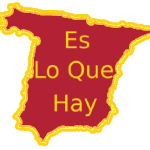Introduction: The Dirección General de Tráfico (DGT), or the General Directorate of Traffic, in Spain has implemented a vehicle rating system to promote sustainable and environmentally friendly transportation. This system classifies vehicles based on their emissions and technological advancements. In this article, we will explore the different ratings within the DGT system, including the C, B, 0, and Eco ratings, as well as specific rules for Madrid and Barcelona.
DGT C Rating: The DGT C rating includes vehicles with moderate emissions. The vehicle years included in this rating are generally as follows:
- Petrol Vehicles:
- Euro 2 Standard (1997-2000): Petrol vehicles manufactured between 1997 and 2000, meeting the Euro 2 emission standard, fall under the DGT C rating.
- Diesel Vehicles:
- Euro 3 Standard (2001-2005): Diesel vehicles manufactured between 2001 and 2005, complying with the Euro 3 emission standard, are typically classified under the DGT C rating.
Owners of vehicles with the DGT C rating should be aware of potential access restrictions in certain areas and consider emission control measures to minimize their environmental impact.
DGT B Rating: The DGT B rating represents vehicles with lower emissions than those in the DGT C category. The vehicle years included in this rating include:
- Petrol Vehicles:
- Euro 3 Standard (2001 onwards): Petrol vehicles manufactured from 2001 onwards and meeting the Euro 3 emission standard fall under the DGT B rating.
- Euro 4 Standard (2006 onwards): Petrol vehicles manufactured from 2006 onwards and complying with the Euro 4 emission standard can also be classified as DGT B.
- Diesel Vehicles:
- Euro 4 Standard (2006 onwards): Diesel vehicles manufactured from 2006 onwards and meeting the Euro 4 emission standard may fall under the DGT B rating.
Vehicles with the DGT B rating often enjoy benefits such as access to low-emission zones and environmental stickers indicating compliance with regulations.
DGT 0 Rating: The DGT 0 rating represents vehicles with zero emissions. These vehicles are typically electric or hydrogen-powered. They contribute significantly to reducing air pollution and are eligible for various incentives and benefits, including unrestricted access to low-emission zones.
DGT Eco Rating: The DGT Eco rating includes vehicles that meet certain criteria for low emissions. The specific criteria vary depending on the vehicle type, such as petrol, diesel, hybrid, or electric. These vehicles often exhibit superior environmental performance and may have access privileges to low-emission zones.
Specific Rules for Madrid and Barcelona: In Madrid, the vehicle access regulations are known as the “Madrid Central” plan. The regulations aim to restrict access to high-polluting vehicles within the city center. As of 2021, only vehicles with the DGT 0 and Eco ratings, as well as residents’ vehicles, are allowed to enter the designated restricted zones.
In Barcelona, the vehicle access regulations are referred to as the “Zona de Bajas Emisiones” (Low Emission Zone). The regulations are based on the DGT classification system, and only vehicles with the DGT 0, Eco, and some DGT B ratings are allowed to enter the restricted zones.
Conclusion: The DGT rating system in Spain classifies vehicles based on their emissions and technological advancements. The C, B, 0, and Eco ratings offer insights into the environmental impact of vehicles and determine their access to certain zones. Understanding the specific rules and regulations in cities like Madrid and Barcelona is crucial for vehicle owners to comply with restrictions and contribute to a cleaner and more sustainable environment. By embracing cleaner mobility options and complying with the DGT rating system, we can collectively work towards a greener future.




